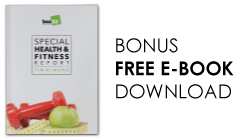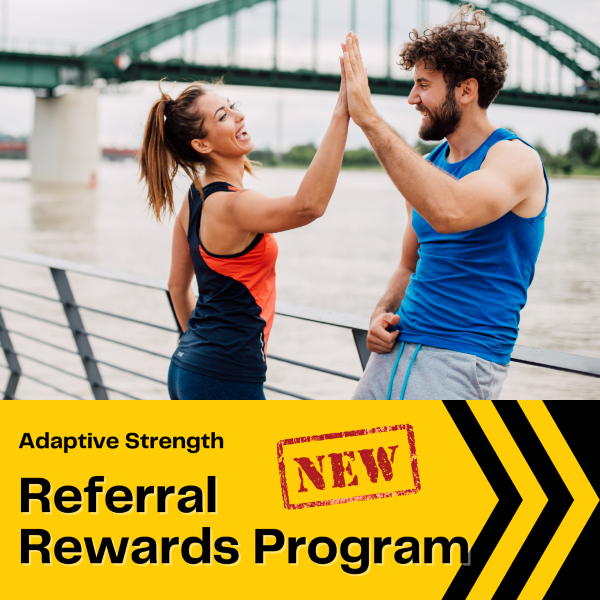If you’re over 50 and looking to regain strength, improve balance, and protect your bones, one of the most powerful—and surprisingly gentle—exercises you can learn is the kettlebell deadlift.
Yes, deadlift. Don’t let the name intimidate you.
When taught properly, the deadlift is not just safe for older adults—it’s one of the best foundational strength training movements for improving lower body strength, enhancing posture, supporting spinal health, and reducing the risk of falls and injury. At Adaptive Strength in Booragoon, we teach a slow, safe, and incredibly effective version of the kettlebell deadlift tailored specifically for individuals with osteoporosis, osteopenia, or mobility challenges.
Here’s everything you need to know to get started confidently and safely.
Why the Deadlift Matters
The deadlift isn’t just a gym exercise—it’s a movement you perform every day:
- Picking up shopping bags
- Lifting a laundry basket
- Getting up from a low chair
- Reaching down to pat the dog
When performed correctly, the deadlift teaches you how to lift with your legs and hips—not your back. For adults over 50, especially those with osteoporosis, learning this technique can help prevent serious injuries while also building strong bones, improving core strength, and enhancing overall stability.
Before You Begin: Master the Hip Hinge & Neutral Spine
Before you attempt a kettlebell deadlift—even with no weight—it’s crucial to understand two foundational movement patterns:
🔹 The Hip Hinge
This is the movement where your hips push back while your spine stays long and neutral. It’s not a squat. The knees bend slightly, but the primary motion comes from the hips shifting back. This protects your lower back and ensures you’re using your glutes and hamstrings—the real powerhouse muscles.
🔹 The Neutral Spine
Keeping a neutral spine means maintaining the natural curve of your back without rounding or arching excessively. This position keeps the spine safe and strong during lifting.
At Adaptive Strength in Booragoon, our clients over 50 start with Prep Drills that isolate and reinforce these two movement patterns before they ever pick up a kettlebell. This ensures every rep is safe, controlled, and effective.
The Beginner’s Deadlift: Start with Support and Elevation
Not all deadlifts start from the floor—and for many seniors, they shouldn’t.
🔸 Platform or Elevated Surface
We often raise the kettlebell onto a platform or stack of mats. Why? Because if your hip mobility is limited, trying to reach too low can compromise your back position. Elevating the kettlebell allows you to maintain a neutral spine while still performing the full movement safely.
Hip Mobility Self-Screen
This quick check (which we perform during your first assessment at Adaptive Strength) helps determine the appropriate height for your deadlift setup. If your hips or knees have limited range—especially after replacements or injury—we modify accordingly to protect your joints while still allowing progress.
Beginner Deadlift Setup:
- Stand tall with feet shoulder-width apart.
- Kettlebell is placed on an elevated platform between your feet.
- Push hips back, keeping chest tall and spine neutral.
- Grip the kettlebell handle.
- Brace your core (tighten as if someone is about to poke your belly).
- Press through your heels and stand tall, keeping the kettlebell close to your body.
- Reverse the motion by pushing hips back to lower the kettlebell back down.
Key Points for Safe and Effective Lifting
Proper form is everything—especially when working with osteoporosis or other joint issues.
✅ Keep your spine long and neutral — no rounding or slouching.
✅ Hips go back, not knees forward — this activates the right muscles and protects the knees.
✅ Weight on your heels — avoid shifting onto your toes.
✅ Brace your core before lifting — think “tight belly,” not “suck it in.”
✅ Look ahead or slightly down — not up at the ceiling or curling the neck.
❌ Avoid rounding your lower back — this is one of the most common and risky mistakes.
❌ Don’t let your knees shoot forward past your toes — keep them stacked above your ankles.
At Adaptive Strength, we guide you through these cues in real-time, providing hands-on support and feedback to make sure every rep is safe and effective.
Progression: Build Strength Slowly and Steadily
One of the biggest mistakes people make with strength training is going too hard, too fast. That’s especially risky when dealing with osteopenia, osteoporosis, or deconditioning.
Instead, we recommend starting:
- With no weight at all or just a light kettlebell (4–8kg)
- Using an elevated platform
- With fewer reps (e.g., 5–8 reps per set)
- Gradually progressing in both weight and range of motion over several weeks
This slow, methodical approach gives your connective tissue, joints, and bones time to adapt safely. Over time, you’ll not only lift more—you’ll move better in your day-to-day life.
The Deadlift’s Real Power: Functional Strength for Life
As we age, the ability to do everyday things confidently—get off the ground, climb stairs, carry groceries—is more important than how much we can lift in a gym.
That’s why the deadlift is considered a cornerstone of functional strength. It trains the muscles that support:
- Upright posture
- Hip and knee stability
- Lower back health
- Core strength
- Balance and coordination
It’s one of the single most efficient movements for adults over 50 looking to regain control of their physical health—especially those in Booragoon and surrounding suburbs looking for expert-guided training that respects their stage of life.
Build Strength and Confidence from the Ground Up
You don’t need to be young or athletic to start strength training. You just need the right guidance, the right technique, and a willingness to start where you are.
At Adaptive Strength in Booragoon, we specialise in helping older adults master the foundations—safely and progressively. The kettlebell deadlift is one of our favourite tools for building strong bones, improving mobility, and enhancing daily function without putting joints at risk.
If you’re living with osteoporosis, osteopenia, or just want to future-proof your body, we’re here to help you move confidently again.
Book your initial assessment today, and let’s get you started on a smarter, stronger, and more capable path forward—one deadlift at a time.




